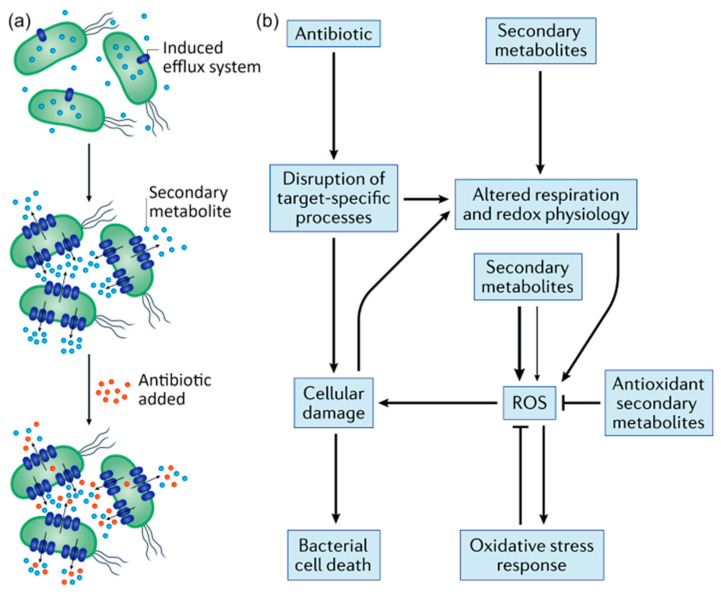Figure 6.
(a) Secondary metabolite-mediated regulation of multidrug resistance efflux pumps. Secondary metabolites induce the expression of efflux systems, which export the metabolite. The increased expression of efflux pumps can provide collateral resilience to antibiotics used in the clinic by expelling the drugs from the microbial cells. (b) Secondary metabolite interactions with oxidative stress. Schematic depicting how bactericidal antibiotics can cause cell death both by directly disrupting target-specific processes and by indirectly promoting the formation of reactive oxygen species (ROS) as a consequence of altered respiration and cellular damage. Secondary metabolites can interface with these pathways at multiple points, including by interfering with respiration and redox homeostasis, directly generating ROS through redox cycling and detoxifying ROS via one-electron reactions. Secondary metabolites that promote oxidative stress can either antagonize or potentiate antibiotic toxicity, which is likely to depend on whether the resulting increases in ROS are moderate (thin arrow) or severe (thick arrow). Moderate increases in ROS may induce protective oxidative stress responses that can counteract antibiotic toxicity, whereas severe increases in ROS may overwhelm the defenses of the cell, which leads to synergistic effects with bactericidal antibiotics. Reprinted with permission from reference [53] © Springer Nature Limited 2021.

